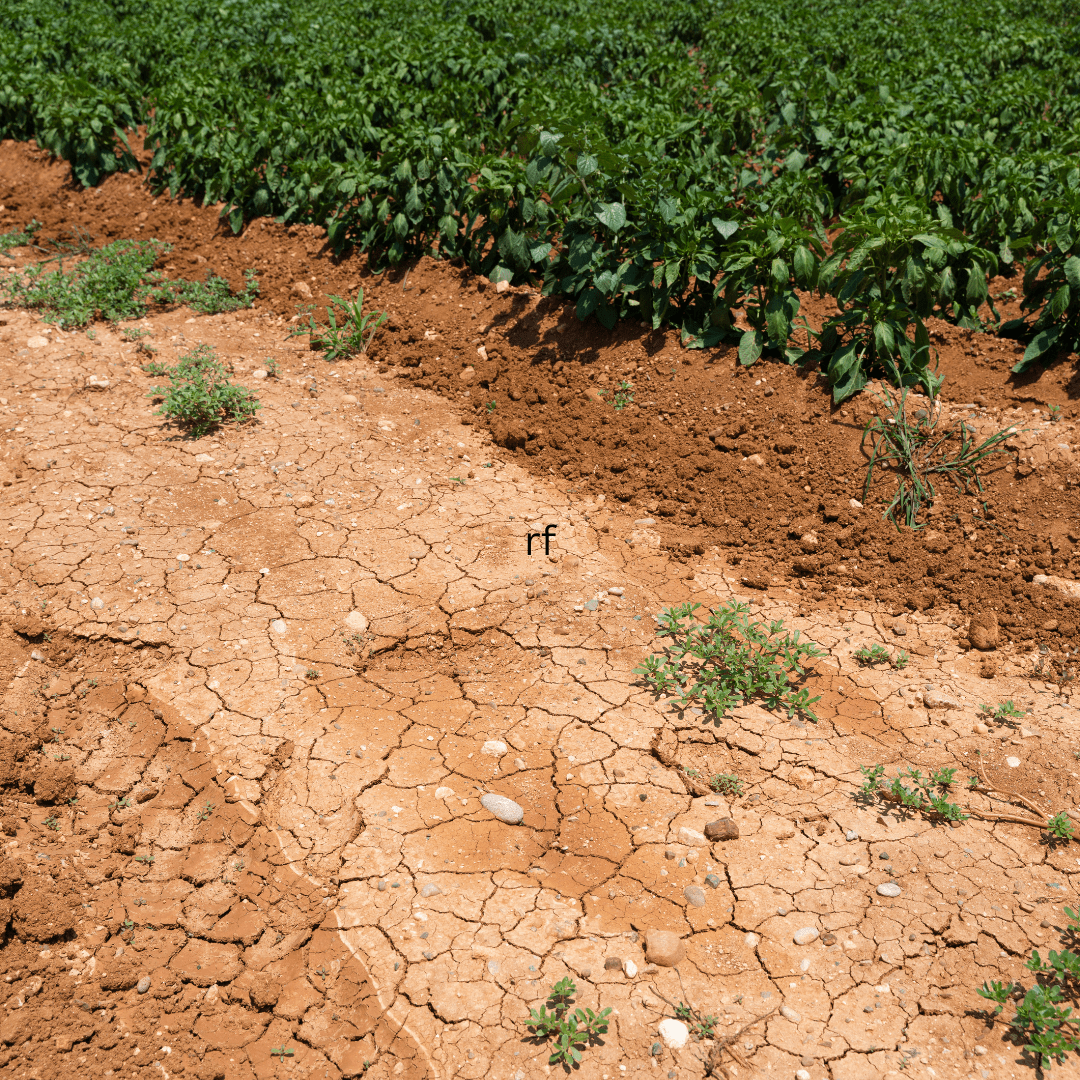Drought tolerant plants.
In a world where water scarcity is becoming increasingly prevalent, the concept of drought-tolerant plants has gained significant importance in the realm of gardening and agriculture. These hardy plant species have adapted to thrive in arid conditions, making them ideal choices for creating a resilient survival garden. In this article, I will explore the benefits of incorporating drought-tolerant plants into your garden, highlight some of the top plant choices for dry conditions, provide essential care tips, and offer insights on designing a sustainable landscape that incorporates these resilient plants. Whether you are a novice gardener or a seasoned horticulturist, learning about and utilizing drought-tolerant plants can enhance the sustainability and productivity of your garden while conserving precious water resources.
This is a pinnable post. Tap or hover over any image in this post to pin to your Pinterest Boards.
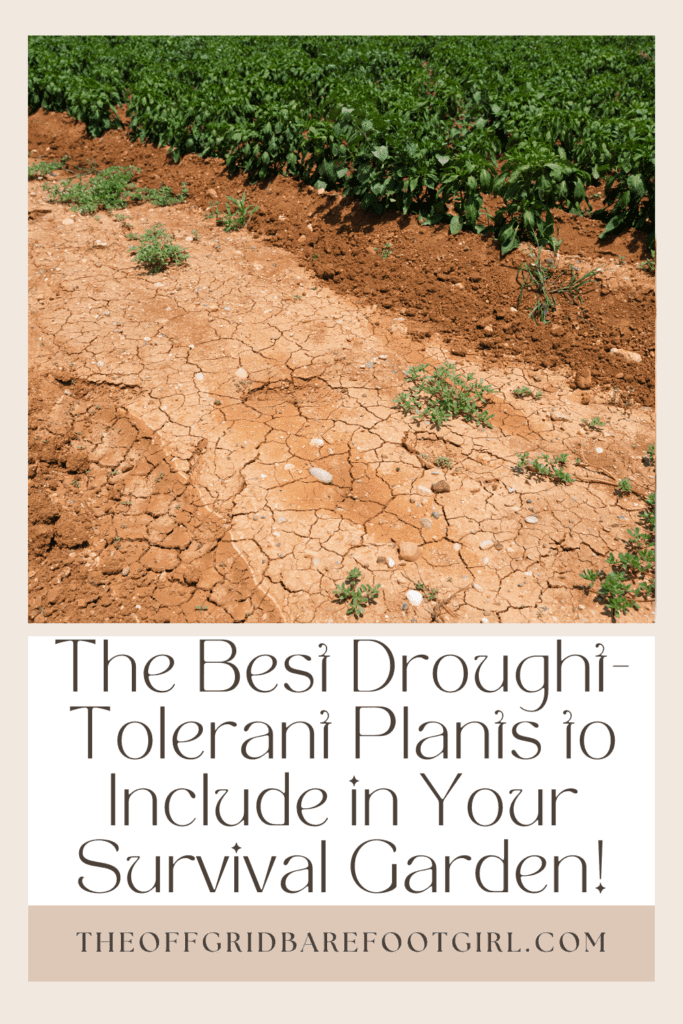
Introduction to Drought-Tolerant Plants
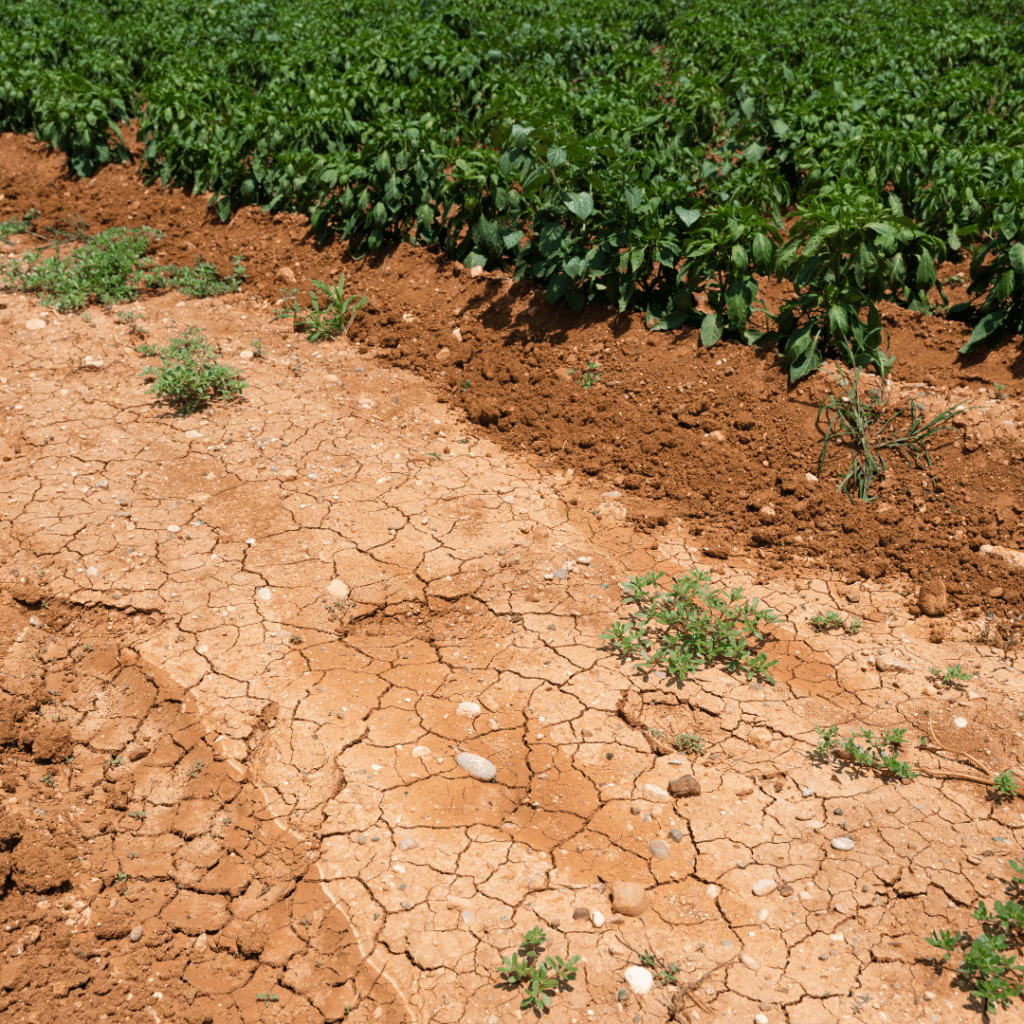
Step into the world of drought-tolerant plants, where resilience meets beauty in the face of arid landscapes and water scarcity. Imagine a garden teeming with life, vibrant hues, and textures that thrive even in the harshest of conditions. From the majestic succulents that store precious moisture within their fleshy leaves to the hardy desert natives adorned with delicate blooms, these plants are not just survivors, but champions of sustainable landscaping.
As climate change intensifies and water becomes a precious resource, the allure of these types of plants grows ever stronger, beckoning gardeners to embrace a new paradigm of gardening that celebrates resilience, conservation, and the enduring power of nature’s resilience.
I have had no choice, but to embark on a journey through my firsthand experience of gardening amidst my drought-stricken garden, where every drop of water becomes a precious commodity in nurturing life. Picture the sun-scorched earth, cracked and parched, as I meticulously tend to my garden, armed with knowledge and determination. In this arid realm, I’ve learned to embrace the resilience of these types of plants, selecting species that thrive in the face of adversity.
With each tender touch and careful watering, I witness the miraculous resilience of nature, as vibrant blooms emerge against all odds, casting a kaleidoscope of colors amidst the dusty backdrop. In this dance of survival, I’ve discovered not only the importance of water-wise gardening, but also the profound sense of satisfaction that comes from nurturing life in even the most challenging of environments.
Understanding Drought-Tolerant Plants
Delve into the fascinating realm of drought-tolerant plants, where resilience and adaptability take center stage in the captivating dance of survival. Picture a botanical tapestry woven with the remarkable stories of plants that thrive in the face of adversity, embracing the challenge of arid climates with grace and tenacity. From the velvety petals of lavender to the silvery foliage of sage, each species boasts unique adaptations that enable it to endure prolonged periods of drought with minimal water.
As gardeners and conservationists alike increasingly recognize the importance of water-wise landscaping, the understanding of these types of plants becomes not just a practical necessity, but a profound appreciation for the resilience and beauty that flourishes in even the most challenging environments.
Importance of Drought-Tolerant Plants in Survival Gardening
In the realm of survival gardening, where self-sufficiency and resilience are paramount, these types of plants emerge as unsung heroes, offering a lifeline in the face of water scarcity. Imagine a garden teeming with sturdy succulents, resilient cacti, and hardy herbs, each one a testament to nature’s adaptability and the ingenuity of survival gardening. In this landscape, where every drop of water counts, these types of plants play a crucial role in ensuring a bountiful harvest even in the most challenging conditions.
With their ability to thrive on minimal water, these resilient species not only provide sustenance, but also offer a sense of security and empowerment to the survival gardener. As climate change intensifies and water becomes increasingly scarce, the importance of integrating these types of plants into survival gardening practices cannot be overstated, offering a beacon of hope and resilience in an uncertain world.
Learning How to Plant a Climate-Friendly Garden
Embark on a journey of discovery as you cultivate a climate-friendly garden with these types of plants. Picture yourself in a world where sustainability meets beauty, each plant a testament to your environmental stewardship. With each dig and seedling placement, uncover the secrets of selecting resilient species that thrive in arid conditions, embracing the challenge of water conservation with enthusiasm.
With expertise in soil composition, watering techniques, and companion planting, you’ll turn your outdoor space into a thriving oasis despite water scarcity. As you care for your climate-friendly garden, you’ll nurture wildlife and pollinators while deepening your connection to nature through sustainability and resilience principles. Explore further benefits of planting climate-friendly gardens in the link provided in another post I have written.
How to Plant A Climate-Friendly Garden: Strategies for Beginners
Benefits of Including Drought-Tolerant Plants in Your Survival Garden
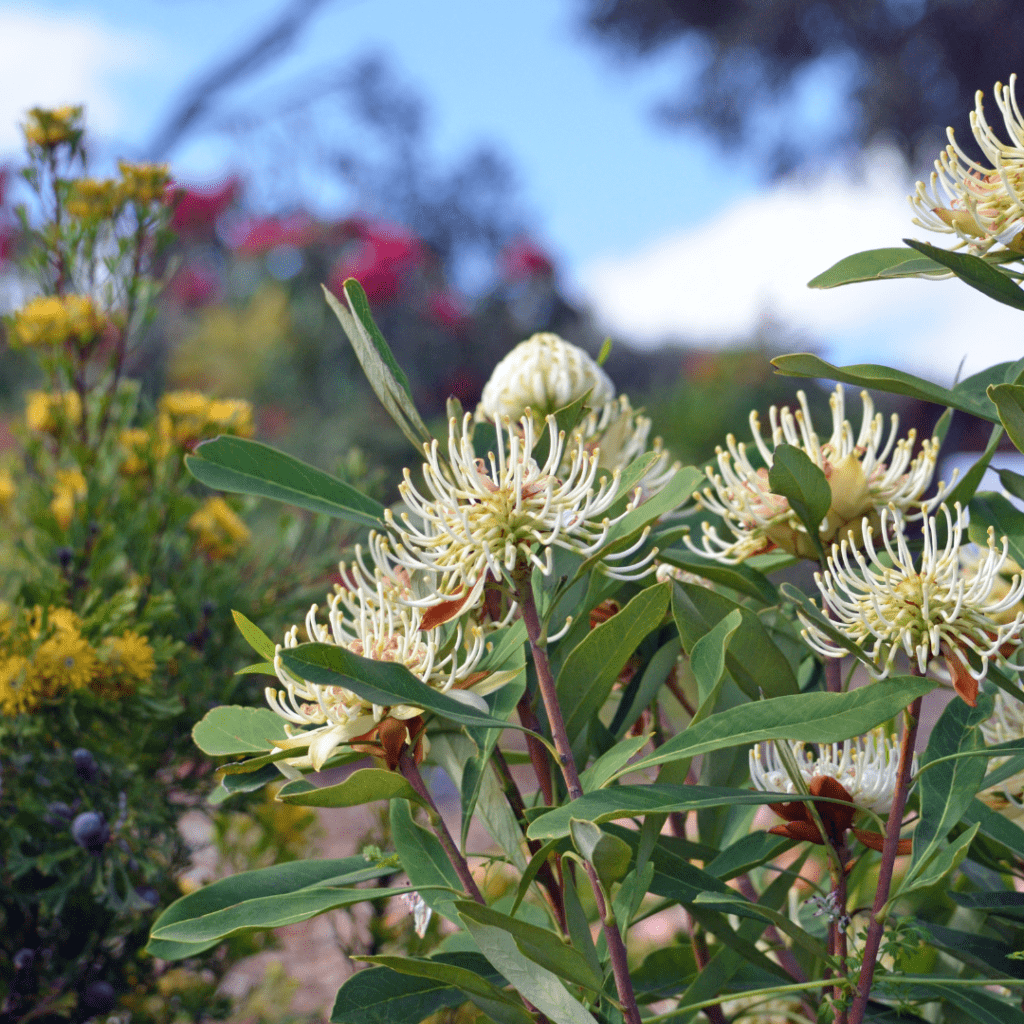
Water Conservation
In gardening, water conservation is paramount as we tend to these plants with care and innovation. Imagine a landscape where every drop is treasured, each watering a mindful act of stewardship. Employing techniques like mulching and drip irrigation, we maximize hydration while minimizing waste for our resilient flora.
As gardeners, we steward the water cycle, ensuring each droplet nurtures the earth and sustains life. Through this conservation effort, we cultivate thriving gardens and deepen our connection to the environment, rooted in sustainability and resilience principles.
To learn more about how to incorporate water conservation techniques in a simple way, see how I use milk jugs as drip irrigation in my garden!
How to DIY a Milk Jug Drip Irrigation System!
Reduced Maintenance
Experience the liberating embrace of reduced maintenance as you cultivate these types of plants in your garden. Picture a landscape where laborious tasks fade into the background, replaced by the tranquility of minimal upkeep. With resilient species that thrive on neglect, you’ll find yourself spending less time watering, pruning, and fussing over your garden. You will find more time simply enjoying its natural beauty.
Bid farewell to the constant battle against pests and diseases, as these hardy plants boast inherent defenses against adversity. Embrace the freedom to explore other passions and pursuits, knowing that your drought-tolerant garden will flourish with little intervention. This will offer a sanctuary of serenity in an otherwise bustling world.
Resilience in Challenging Conditions
Witness the resilience of drought-tolerant vegetable plants thriving in challenging conditions. Admire their vibrant colors and robust flavors that testify to their indomitable spirit.
Despite scorching days and parched soil, hardy plants tap into their innate ability to conserve moisture and endure dry spells. As gardeners, we marvel at their tenacity, confident our drought-tolerant vegetable garden will yield a bountiful harvest against the odds.
Top Drought-Tolerant Vegetable Plants for Dry Conditions
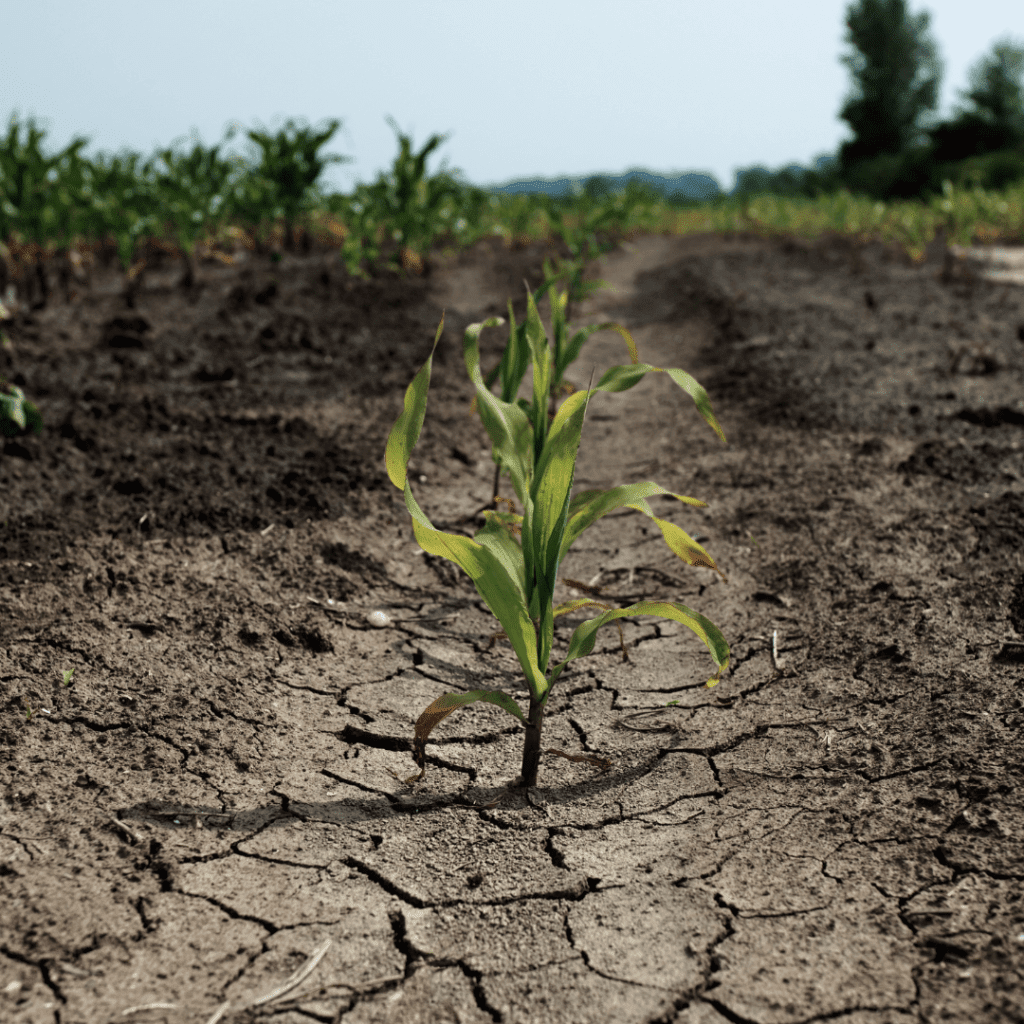
Explore the resilient world of drought-tolerant vegetable plants, where hardiness meets flavor in the harshest of conditions. Picture a garden thriving despite dry spells, with vibrant veggies defying the odds. From the succulent sweetness of tomatoes to the fiery kick of peppers, these plants not only survive, but flourish in arid environments. Their ability to conserve moisture and withstand drought makes them invaluable additions to any garden seeking sustainability.
With options like kale, Swiss chard, and beans, drought-tolerant vegetables ensure a bountiful harvest in dry climates. Whether you’re a seasoned gardener or just starting out, these resilient veggies guarantee success despite adversity.
Here are the Top Drought-Tolerant Vegetable Plants for Dry Conditions
- Tomatoes.
- Peppers.
- Eggplant.
- Okra.
- Swiss Chard.
- Kale.
- Collard Greens.
- Zucchini.
- Summer Squash.
- Cucumbers.
- Beans.
- Sweet Potatoes.
- Onions.
- Garlic.
- Radishes.
Tips for Caring for Drought-Tolerant Plants
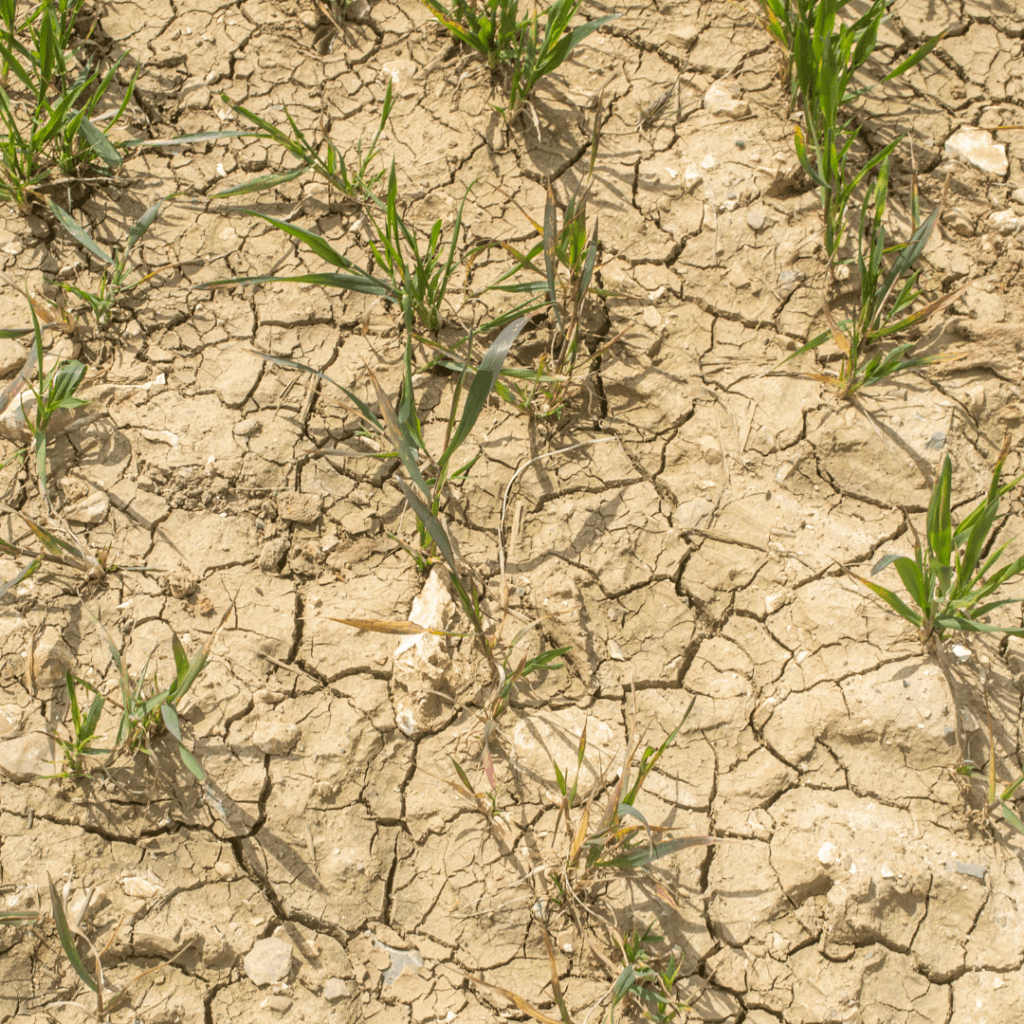
Proper Watering Techniques
Mastering watering techniques for drought-tolerant vegetables is crucial for sustainable gardening success. Envision yourself as a steward of a flourishing garden, where water is cherished and maximized. Opt for deep, infrequent watering to promote deep-root growth and resilience against drought. Mulching around plants retains moisture, reducing the need for frequent watering.
Water early in the morning or late in the evening to minimize evaporation and ensure plants absorb water efficiently. Understanding the needs of drought-tolerant vegetables and employing these techniques nurtures a thriving garden in dry conditions. This can help in yielding plentiful harvests while conserving water resources.
Soil Preparation and Mulching
Prepare the soil and mulch for success in your survival garden, where resilience is key. Imagine yourself as the architect of abundance, with each shovel laying the foundation. Start by loosening the soil, ensuring it’s well-draining and aerated. Add compost or aged manure to enrich the soil with nutrients for strong plants.
After priming your soil, layer mulch to conserve moisture, suppress weeds, and regulate soil temperature. Opt for organic options like straw or leaves that enrich the soil as they decompose. With proper soil preparation and mulching, you’ll create an optimal environment for drought-tolerant vegetables. In turn, this ensures a bountiful harvest in tough conditions.
For information to begin composting to improve the health of your garden’s soil, I have written helpful information to help you get started. You can find this information in the following links.
- Why Cedar Mulch Is The Perfect Natural Weed Barrier
- How to Start Composting for the Garden: A Step-by-Step Guide
- The Ultimate Guide to Composting in Your Suburban Backyard
- Clever Ways to Incorporate Indoor Composting into Your Home (Psst! You can even compost in your apartment!) And if you have an apartment balcony, you can have a garden too! Must-Have Tools for a Successful Balcony Vegetable Garden
Designing a Resilient Survival Garden with Drought-Tolerant Plants
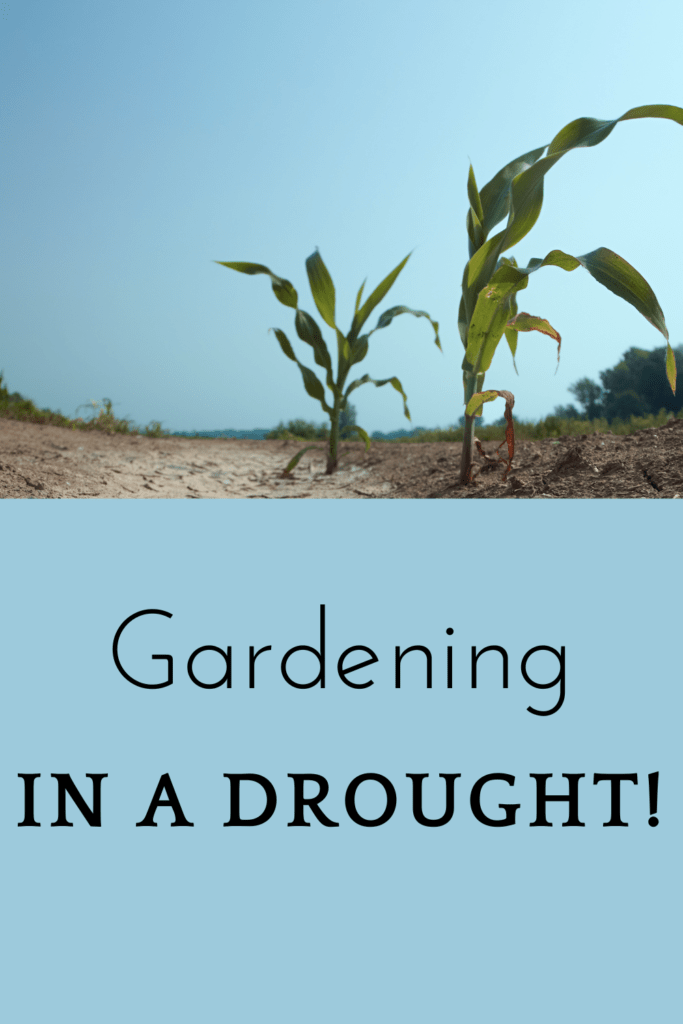
Embark on an exciting journey of designing a resilient survival garden with drought-tolerant vegetables, where ingenuity meets necessity. Picture yourself as the mastermind behind a thriving oasis, carefully selecting vegetables that thrive in arid conditions while providing essential sustenance.
Each vegetable is chosen strategically for its ability to thrive with minimal water. Embrace innovative techniques like soil preparation, mulching, and strategic planting to prioritize resilience. With every seed, your survival garden becomes a beacon of self-sufficiency and abundance, offering nourishment and resilience even in tough times.
Layout and Plant Selection
Crafting the layout and selecting plants for a drought-tolerant vegetable survival garden is an invigorating journey, blending creativity with necessity in the face of challenges. Imagine yourself as the visionary curator of a thriving oasis, meticulously arranging plants that not only endure arid conditions, but also offer essential sustenance.
From the vibrant hues of tomatoes to the hearty greens of kale, each selection is purposeful, chosen for its resilience and nutritional value. Embrace innovative techniques such as companion planting and raised beds to maximize space and water efficiency. With every plant placed, your garden becomes a sanctuary of self-sufficiency, promising nourishment and resilience amidst adversity.
Designing a Garden for Dry Conditions
When laying out a vegetable garden for dry conditions, it’s essential to maximize water efficiency and choose drought-tolerant plants mentioned above.
Here’s a guide
- Site Selection: Choose a location with good drainage and ample sunlight. Avoid low-lying areas prone to waterlogging.
- Group Plants by Water Needs: Group vegetables with similar water requirements together. This ensures efficient irrigation and prevents overwatering or underwatering.
- Use Raised Beds: Raised beds promote better drainage and prevent water runoff. They also warm up quicker in the sun, which can be beneficial in dry conditions.
- Mulch: Apply mulch around plants to conserve moisture in the soil, suppress weeds, and regulate soil temperature. Organic mulches like straw or wood chips are ideal for retaining moisture.
- Install Drip Irrigation: Drip irrigation delivers water directly to the plant roots, minimizing evaporation and ensuring efficient water usage. Consider installing a drip irrigation system to provide consistent moisture to your vegetable garden.
- Choose Drought-Tolerant Varieties: Select vegetable varieties known for their drought tolerance. Examples include tomatoes, peppers, zucchini, beans, and leafy greens like kale and Swiss chard.
- Companion Planting: Planting companion crops can help conserve moisture and improve soil health. For example, planting legumes like beans or peas can add nitrogen to the soil, benefiting neighboring plants.
- Watering Schedule: Water deeply, but infrequently to encourage deep root growth and drought resistance. Water early in the morning or late in the evening to minimize evaporation.
By implementing these strategies, you can create a vegetable garden that thrives even in dry conditions while conserving water and maximizing yield.
Companion Planting Strategies
Discover the art of companion planting strategies for your drought-tolerant vegetable survival garden, where creativity meets necessity in the quest for resilience. Picture yourself as a savvy gardener, orchestrating a symphony of plant partnerships that enhance growth and combat dry conditions. Pairing drought-tolerant vegetables with compatible companions not only maximizes space, but also promotes soil health and conserves water.
Consider planting nitrogen-fixing legumes like beans alongside heavy feeders such as tomatoes to enrich the soil and boost productivity. Embrace the natural pest-repelling properties of aromatic herbs like basil and rosemary, which can help protect vulnerable crops from insect damage. With each carefully selected plant partnership, your survival garden becomes a harmonious ecosystem, thriving in the face of adversity and providing sustenance and solace in challenging times.
Learn more about companion planting for your garden, why I started a survival garden in my backyard, and how you can grow one too!
- How to Do Companion Planting: Friends or Foes?
- Why I Built A Survival Garden in My Backyard
- Build Your Survival Garden with an All-In-One Homestead Seed Bank!
- Fastest Growing Vegetables for Your Survival Garden
Conclusion
In conclusion, by including drought-tolerant plants in your survival garden, you not only create a beautiful and resilient edible garden, but also contribute to sustainable gardening practices. The ability of these plants to thrive in challenging conditions, with minimal water requirements, offers a practical solution for gardeners facing water shortages or wanting to reduce their environmental impact. Embracing the diversity and adaptability of drought-tolerant plants can transform your garden into a thriving oasis that withstands the test of time. So, whether you are looking to conserve water, minimize maintenance, or simply enjoy a lush garden in even the driest of climates, integrating drought-tolerant plants is a wise and rewarding choice.
Resources: Explore further resources for drought tolerate plants!
- Top 15 Drought Tolerant Plants That Can Handle Dry Weather- By Birds & Blooms
- 15 Best Plants for Drought Tolerant Gardens – By The Spruce
- Top 20 Drought Tolerant Plants for a Waterwise Landscape – By Garden Design
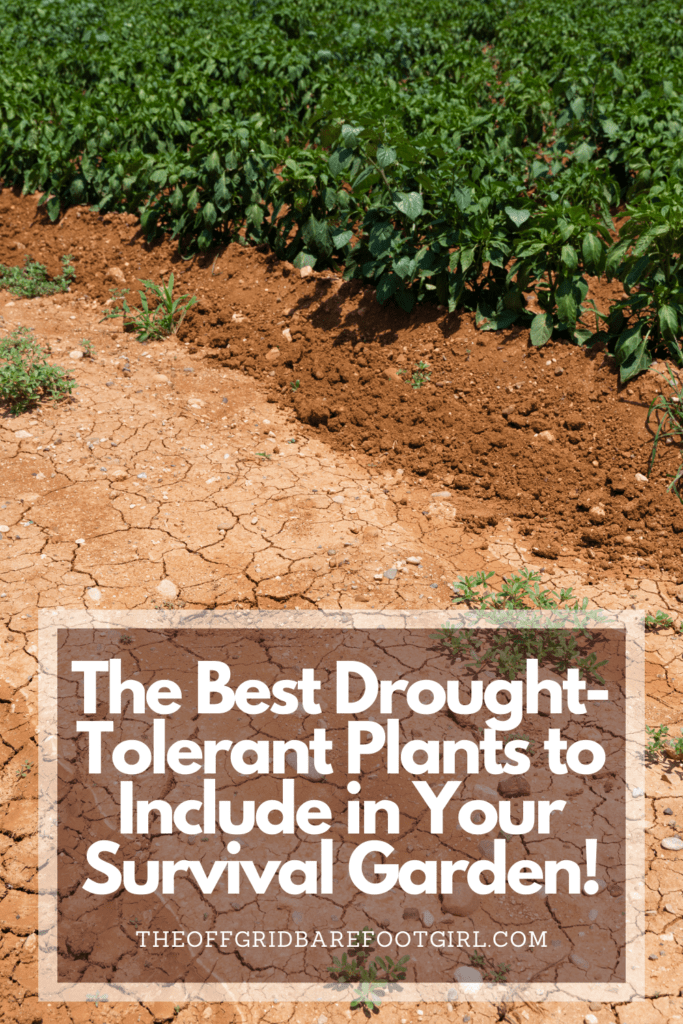
Frequently Asked Questions
1. Are drought-tolerant vegetable plants suitable for all climate zones?
Drought-tolerant vegetable plants can be a great option for gardens in most climate zones, but it’s important to consider the specific conditions of your area before planting them. While these plants are more resilient to dry spells and require less water than traditional vegetables, they still need some level of moisture to thrive. In areas with extremely high temperatures or frequent droughts, it may be challenging to keep these plants healthy without additional watering or care. On the other hand, in regions with milder climates or regular rainfall, drought-tolerant vegetables can offer a low-maintenance option for home gardeners. It’s always a good idea to research the specific needs of each plant variety and consider factors like soil type, sun exposure, and temperature fluctuations when deciding if they are suitable for your climate zone.
2. Do drought-tolerant vegetable plants require any special care or maintenance?
Drought-tolerant vegetable plants have adapted to survive in dry conditions, but they still require some care and maintenance to thrive. These plants typically need well-draining soil and consistent watering until established. Mulching can help retain moisture in the soil and reduce water evaporation, while also suppressing weeds that compete for water. Additionally, regular weeding is important to prevent competition for nutrients from other plants. Some drought-tolerant vegetables, like tomatoes and peppers, may still benefit from occasional deep watering during prolonged dry spells to promote healthy growth and fruit production. Overall, while these plants are more resilient to drought conditions than other varieties, they still require attention and care to ensure a successful harvest.
3. Can I incorporate drought-tolerant vegetable plants into my existing garden design?
Absolutely! Incorporating drought-tolerant vegetable plants into your existing garden design is not only possible, but also a great idea for conserving water and reducing maintenance. Some popular choices for drought-tolerant vegetables include tomatoes, peppers, eggplants, and zucchini. These plants have evolved to survive in drier conditions by developing deeper root systems that can access water deep within the soil. When planning your garden layout, consider grouping these vegetables together in raised beds or containers to make watering more efficient. Additionally, adding a layer of mulch around the base of the plants can help retain moisture in the soil and reduce evaporation. With some thoughtful planning and care, you can enjoy a thriving vegetable garden even during dry spells.
4. How can I ensure successful growth and harvest from drought-tolerant vegetable plants in my survival garden?
When it comes to ensuring successful growth and harvest from your drought-tolerant vegetable plants in a survival situation, there are a few key tips to keep in mind. First off, make sure you’re planting your veggies in nutrient-rich soil that drains well. Adding compost or organic matter can help retain moisture for longer periods. Secondly, try to water your plants deeply, but infrequently, allowing the roots to penetrate deeper into the soil and become more resilient to drought conditions. Mulching around your plants can also help conserve moisture and regulate soil temperature. Additionally, consider choosing varieties of vegetables that are specifically bred for drought tolerance, such as cherry tomatoes or peppers. With a little bit of planning and care, you can set yourself up for a successful harvest even in dry conditions!
Summary
I hope I have inspired you to garden and grow food even in a dry conditions with these tips and products.
If you were encouraged by this post, I invite you to check out my FREE Printables Page for fun free printables, planners, and charts.
ENTER MY FREE Printables Page HERE
Here are some more of my gardening inspiration posts to check out!
How to DIY a Milk Jug Drip Irrigation System!
Why Cedar Mulch Is The Perfect Natural Weed Barrier
Onions: How to Grow Onions for Storage
Peas: How to Grow Garden Peas for a Bumper Crop
Carrots: How to Grow Carrots for a Bountiful Harvest
Prep Your Garden for Spring Planting with These Expert Tips!
How to Grow a Prepper Garden to Survive and Thrive
The Best Garden Tools You Need for a Productive Season
Fastest Growing Vegetables for Your Survival Garden
How to Grow Marigolds As Pest Control In Your Vegetable Garden
Must-Have Tools for a Successful Balcony Vegetable Garden
How to Effectively Combat Powdery Mildew in Your Garden
The Best Tips for Organic Gardening
How to Release Ladybugs In Your Garden for Organic Pest Control
The Best Garden Snail Control Strategies
The Best Spring Vegetables to Grow in Your Garden
Seed Starter Mix: How To Make Your Organic Seed Starter Mix At Home
How to Grow a Productive Canning Garden
How to Plant and Grow a Salsa Garden
Easiest Heirloom Vegetable Seeds to Grow Now
How to Use the Hand Twist Claw Tiller: Tackling Tough Soil
More Fun Gardening Posts to Check Out!
Planning Your Garden: How to Plan a Vegetable Garden: Expert Green Thumb Tips!
Winterizing the Garden: How to Winterize Your Vegetable Garden: Step-by-Step Checklist
Mulching the Garden: How to Make Leaf Litter Mulch
Grow a Pumpkin Patch: How to Grow a Pumpkin Patch in Your Backyard
How to Grow a Fall Garden: 9 Best Fall Crops
Clever Ways to Incorporate Indoor Composting into Your Home
How to Start Composting for the Garden: A Step-by-Step Guide
The Ultimate Guide to Composting in Your Suburban Backyard
Why I Built A Survival Garden in My Backyard
16 Best Medicinal Herbs to Grow in Your Garden Now
Blessings,
The Off Grid Barefoot Girl

